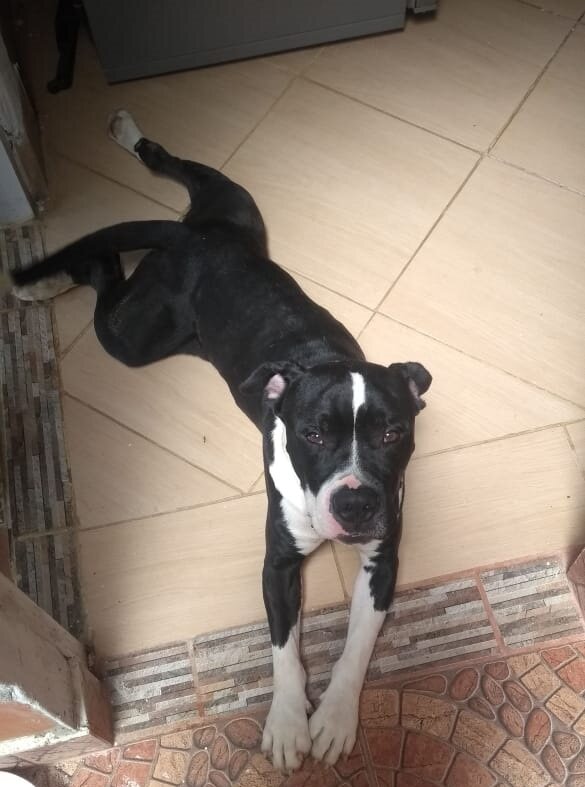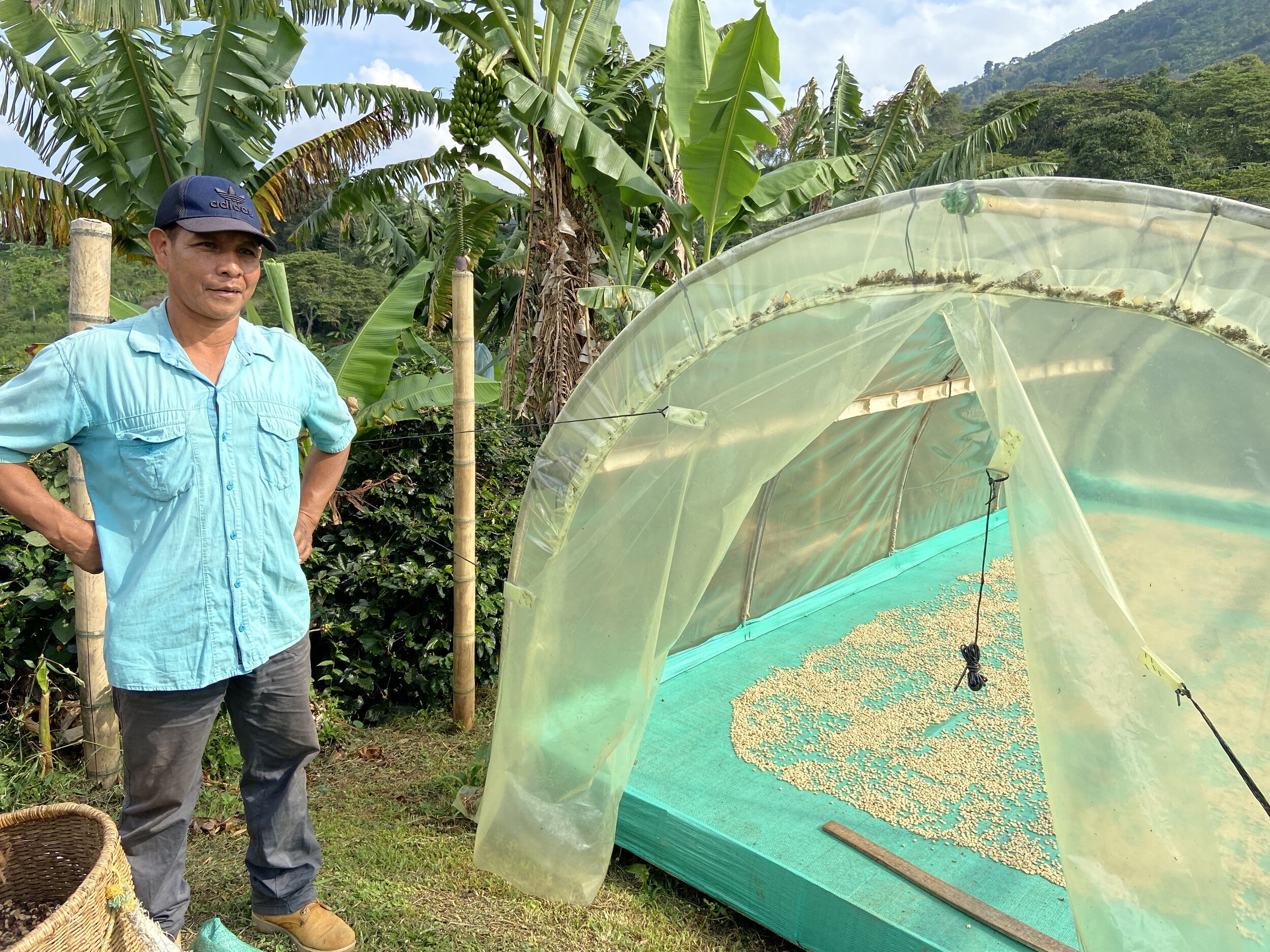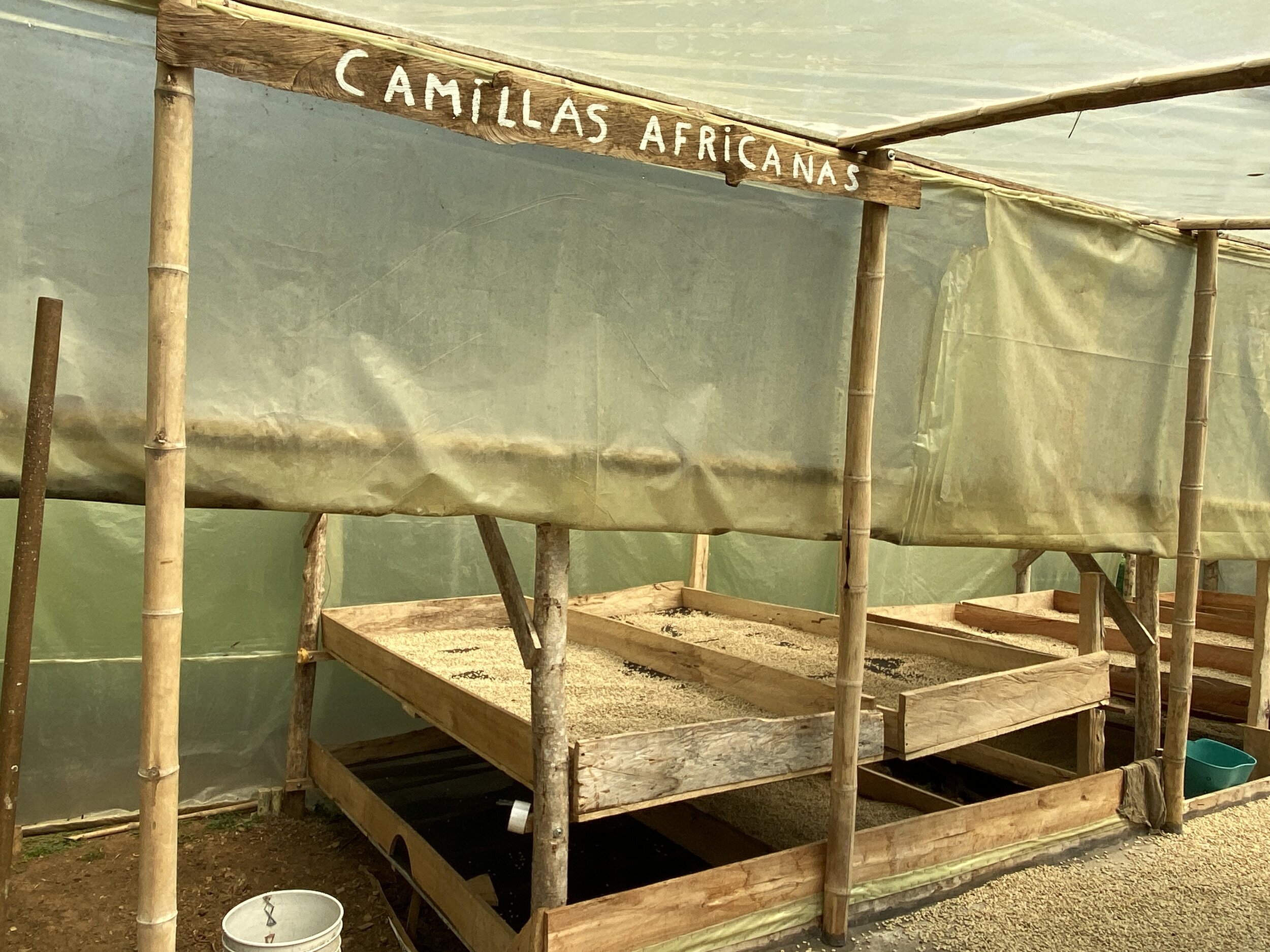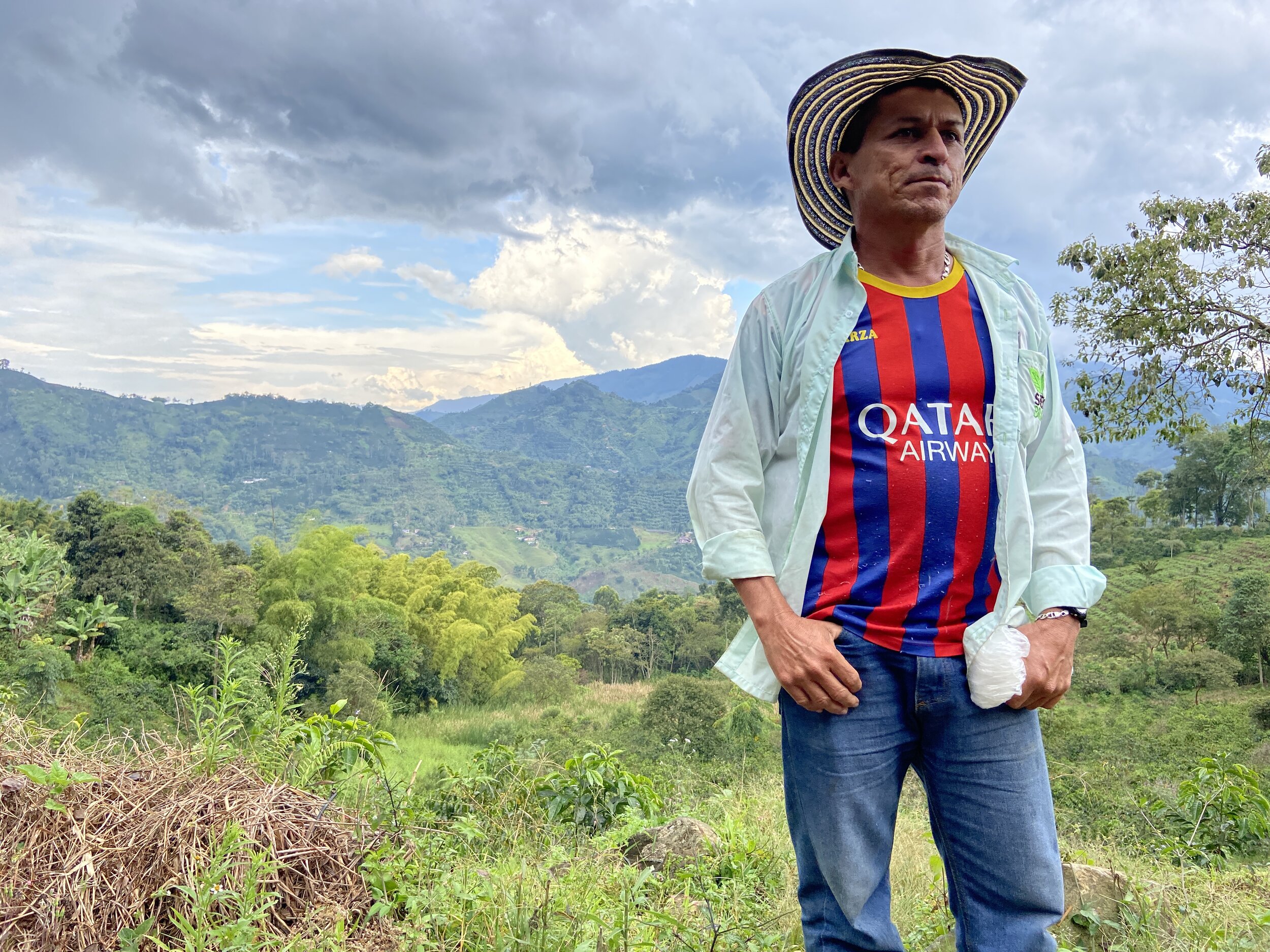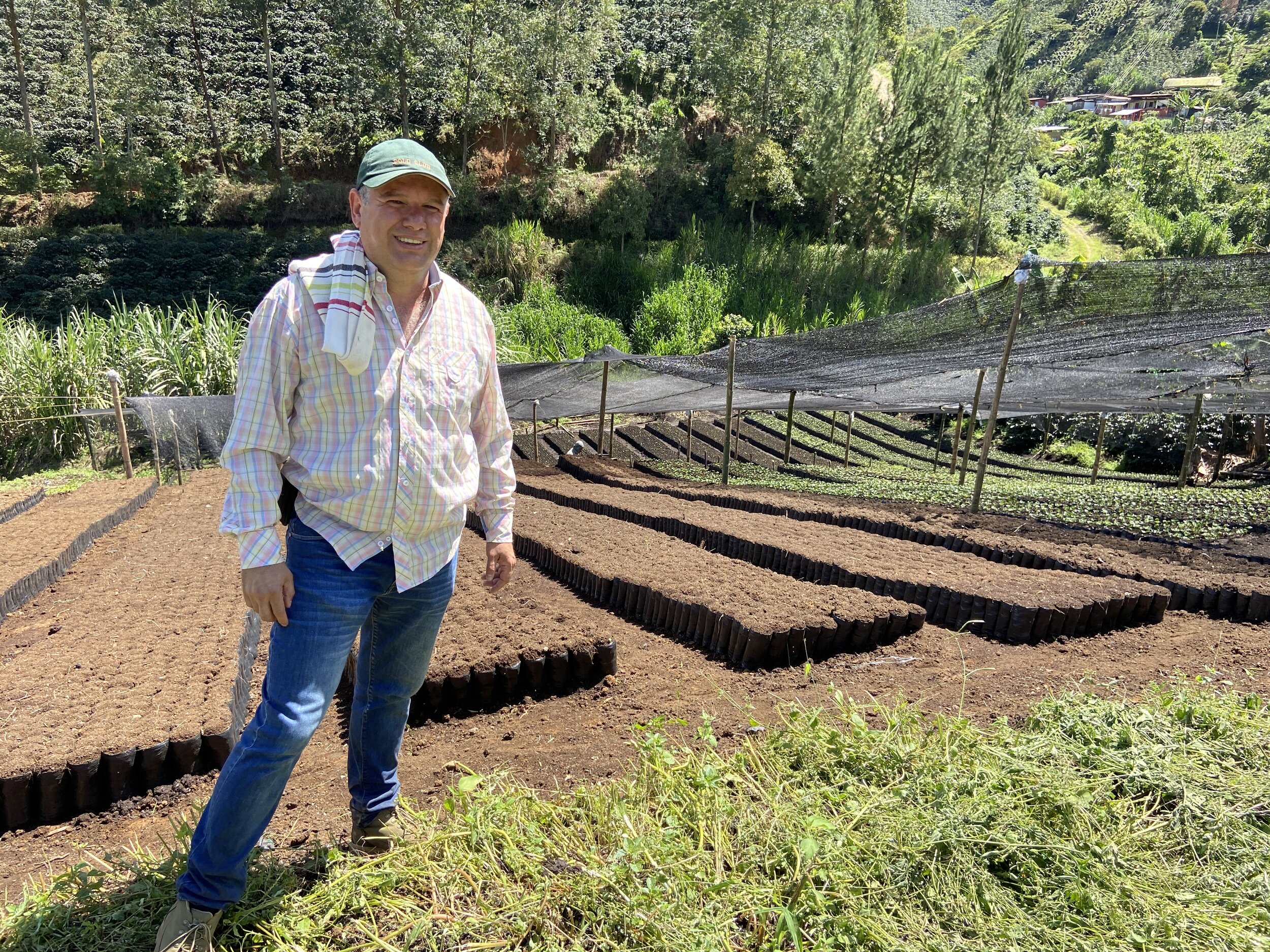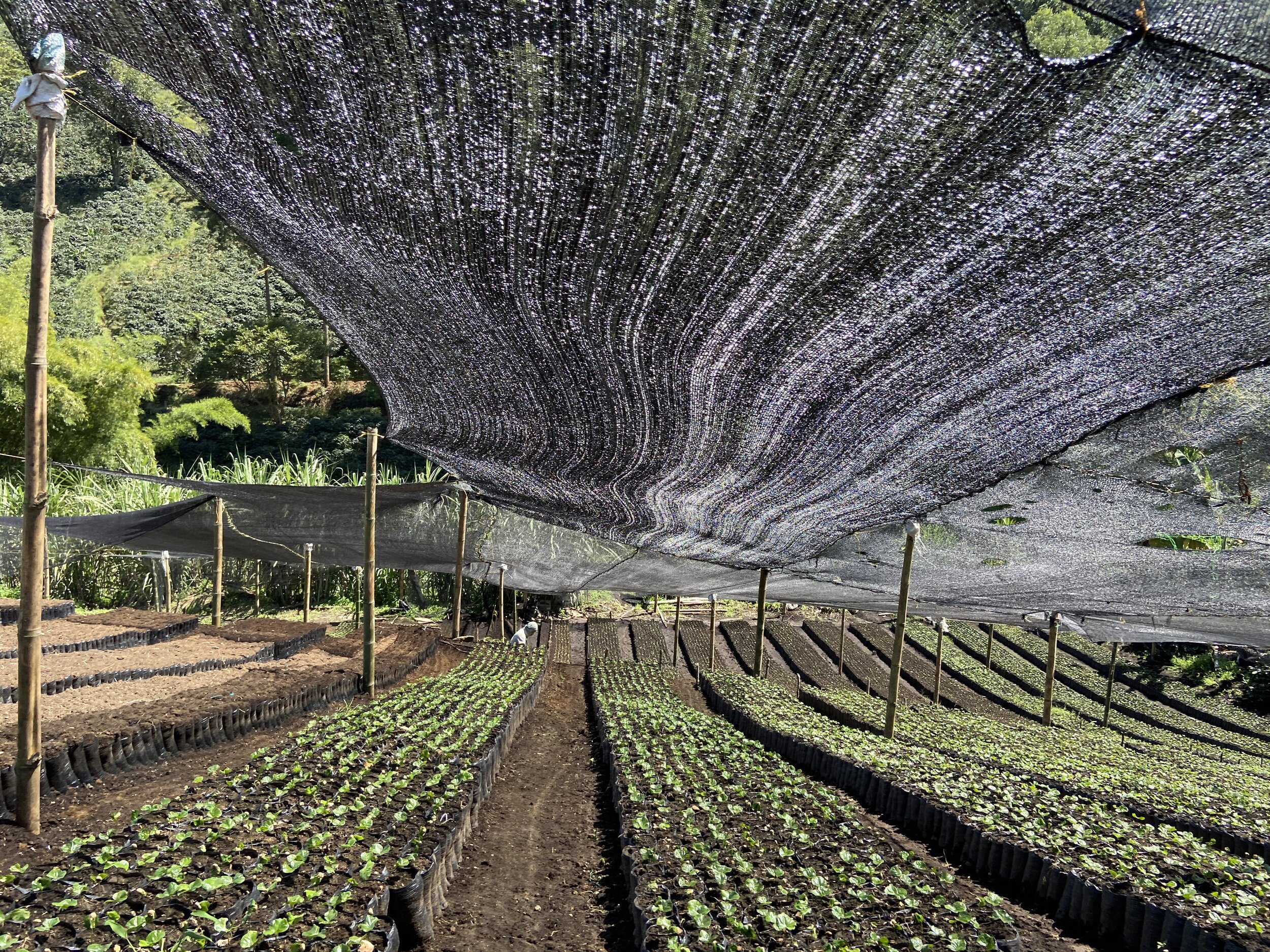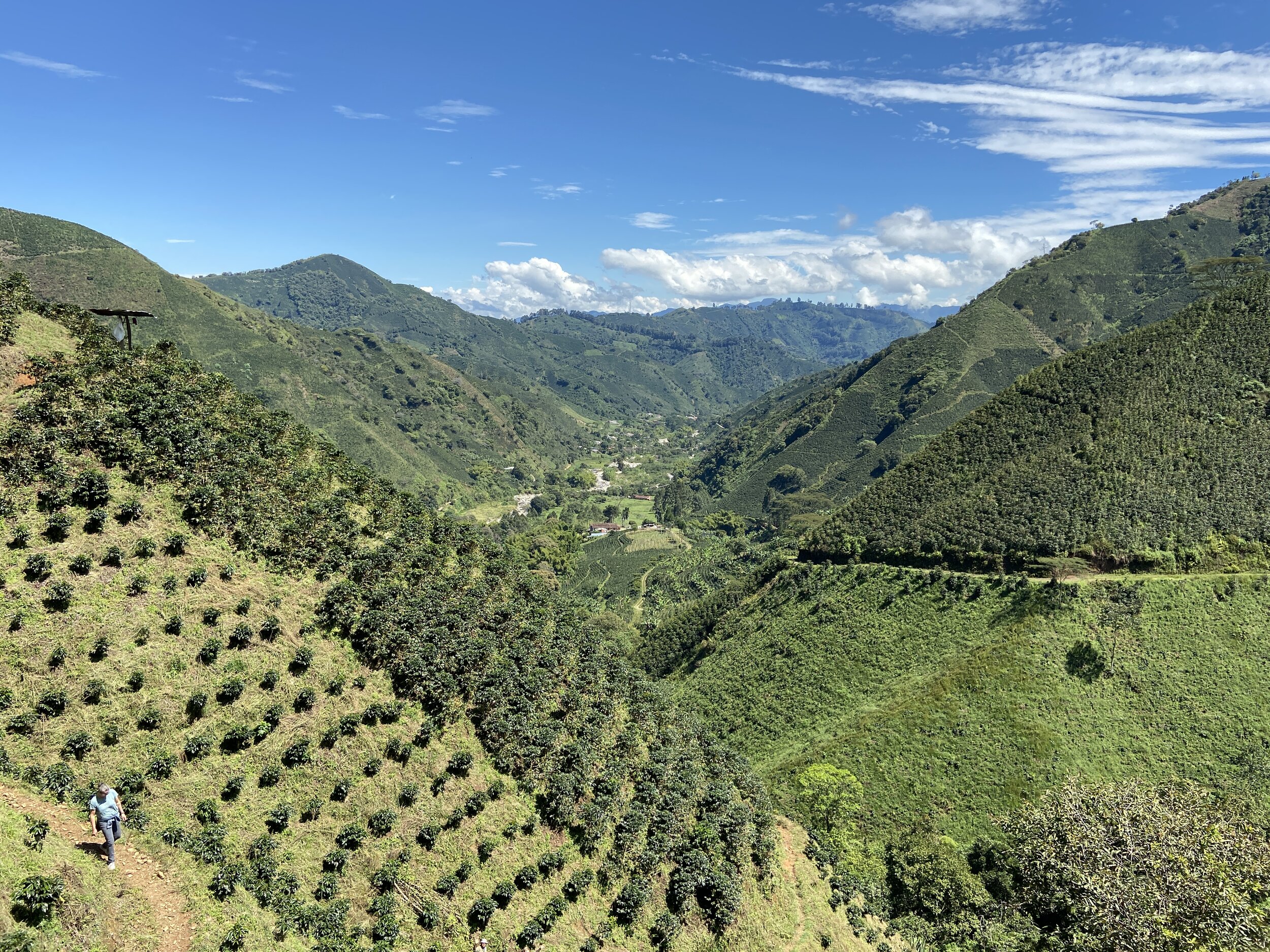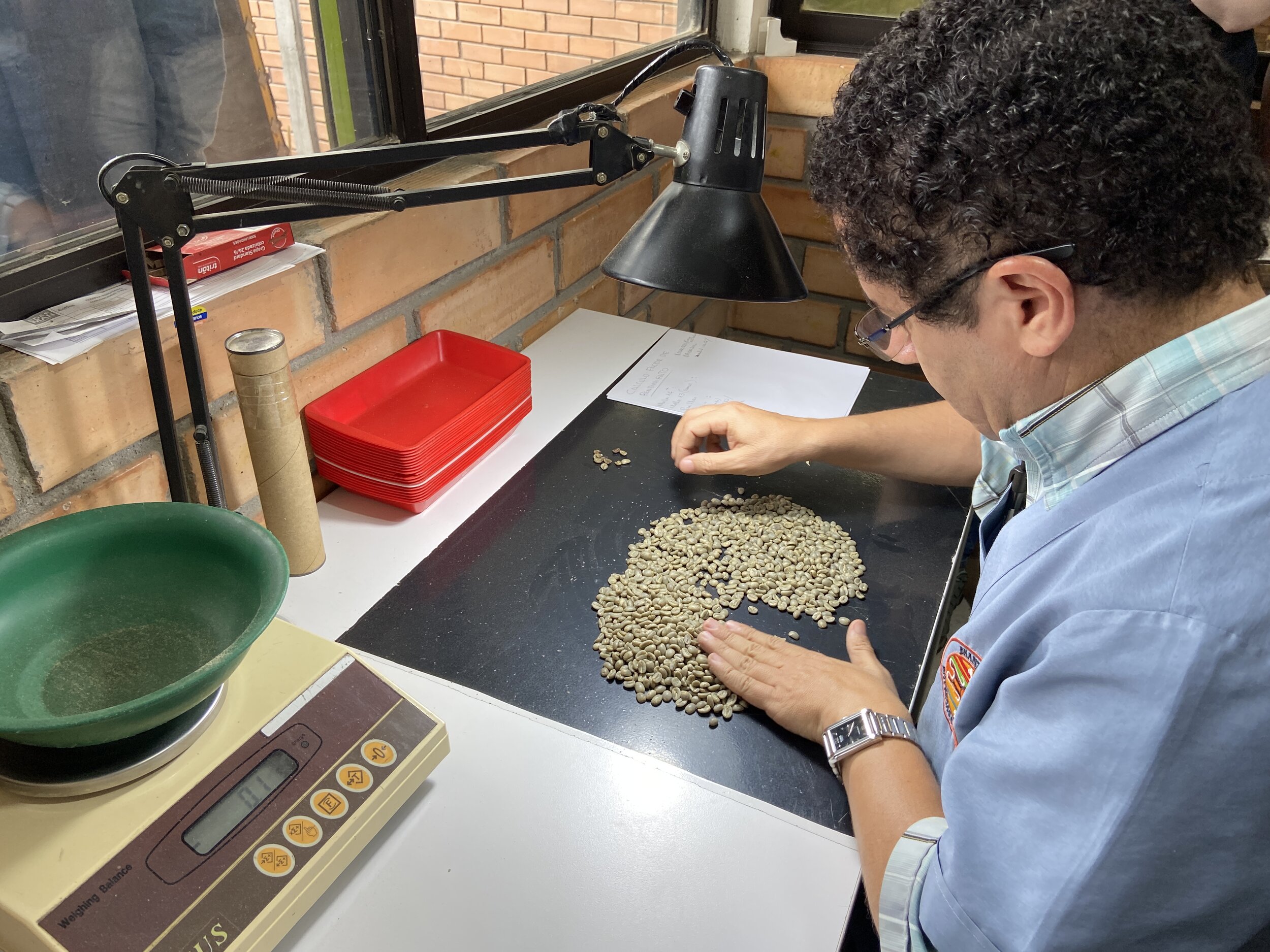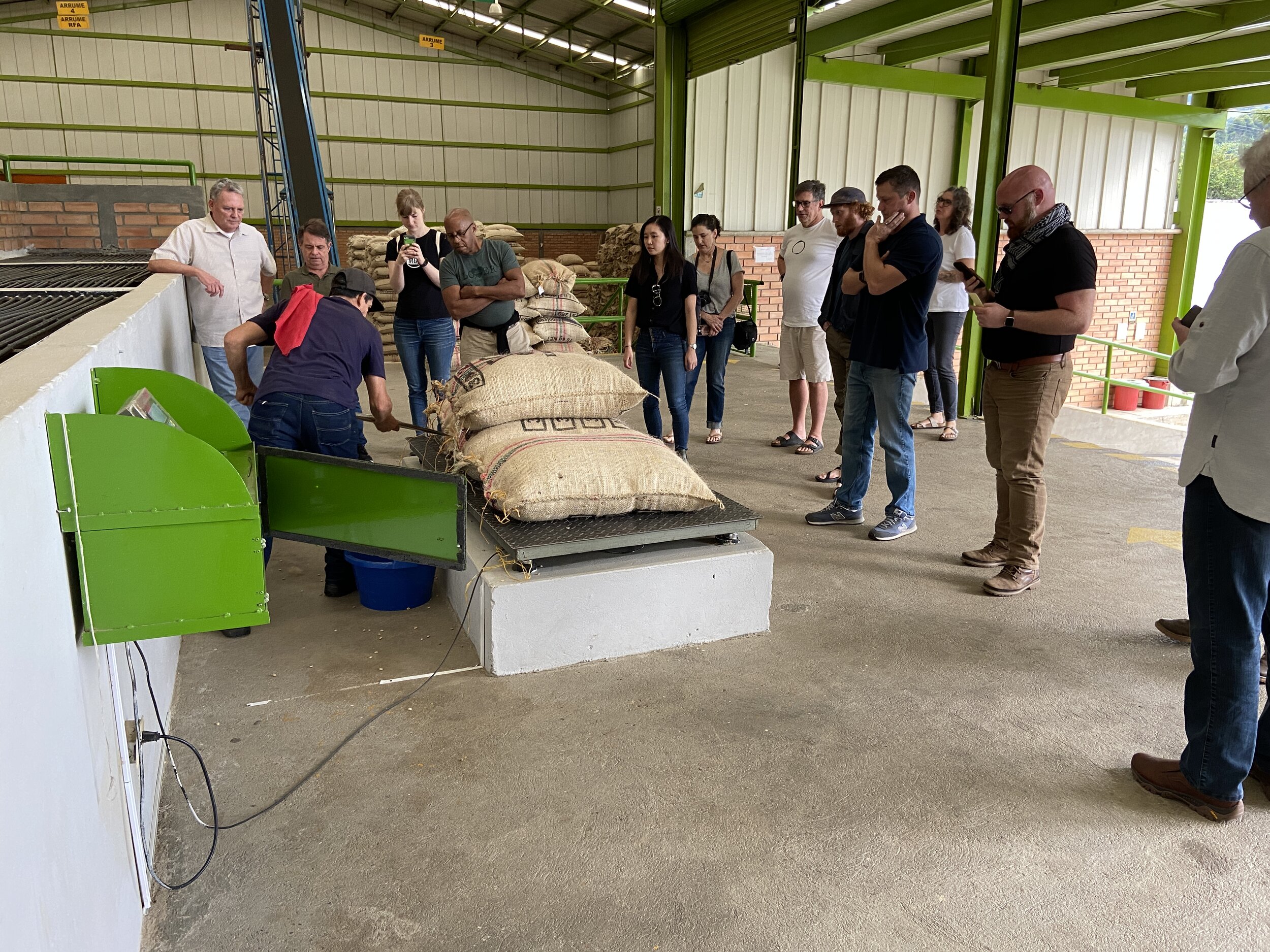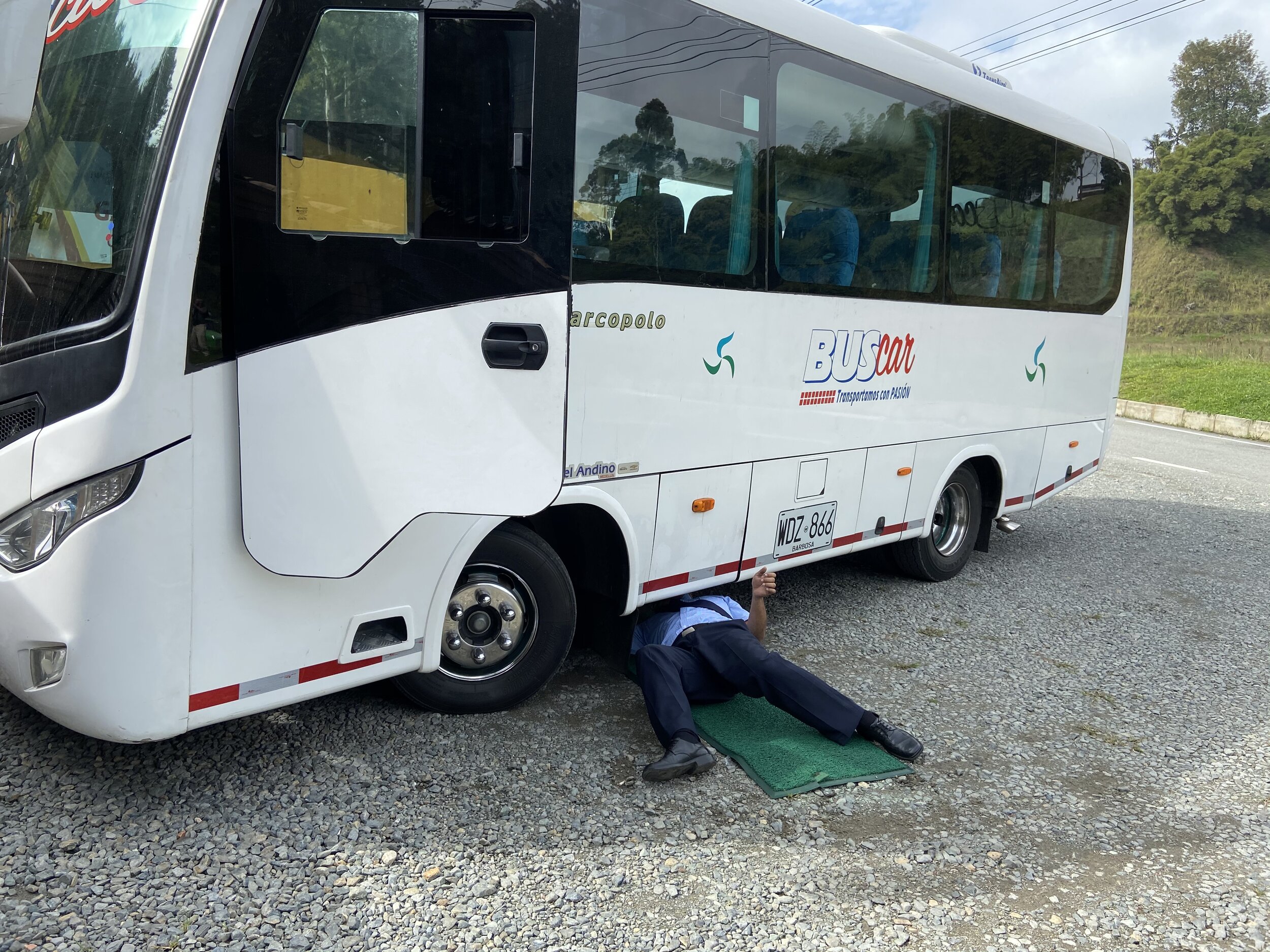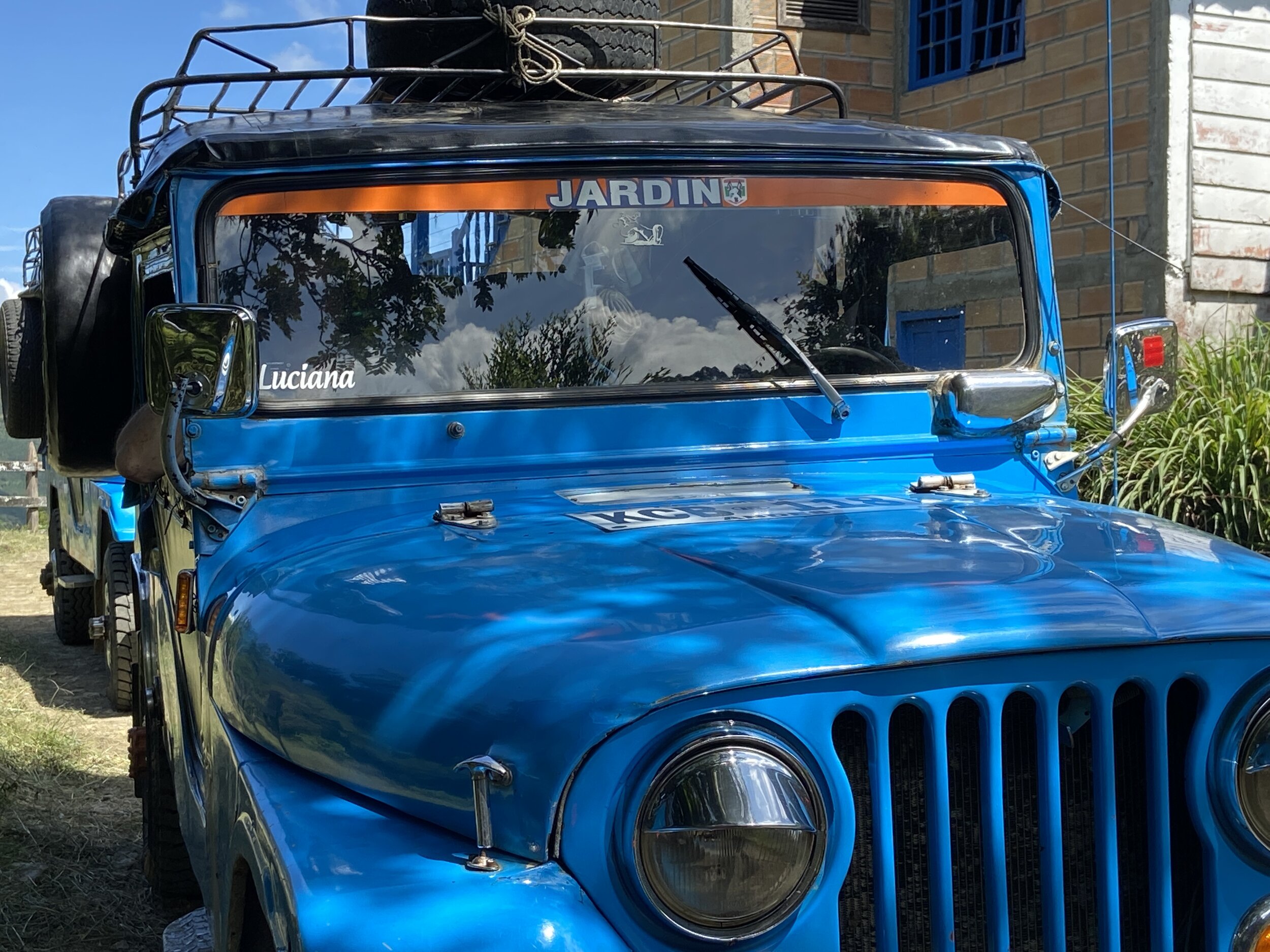Our annual December visit to our trilladora in Jardín Antioquia has come and gone. We traveled with a great group of clients, visited new farms, and enjoyed our time in the colonial town as it was all dressed up and ready for Christmas.
The weather was generally agreeable in both Medellín and Jardín, clouds giving way to strong sun by mid-afternoon, a rainstorm that only dampened us a little on the second day, and temperate nights for sitting and socializing in the town square. The road into the heart of southern Antioquia continues to be a crapshoot. Never-ending construction, occasional road-blocking accidents, and road wipe-outs from landslides and floods keep drivers on their toes and searching for the right combination of road choices and blind luck. The condition of the buses we rent continues to plague us a bit too. This year, it was a deteriorating clutch cable that forced us into two pull-overs and finally a bus swap that kept us in a roadside restaurant for an hour. Six and a half hours out of Medellín, we pulled into Jardín.
The mill was moderately full with multiple export lots waiting to be picked up and trucked to port. But at this point in the harvest, the parchment volume was a little light. It seems like there is still a good amount of coffee to be picked and processed at the farms. Each of the farms we visited did have pretty full storerooms with parchment that needed to be delivered to the mill. There is a good chance that the long-term low market levels have played a part in this, and now with a little C market rise over the past weeks my guess is we’ll start seeing more parchment moving and the warehouse filling up with slightly more expensive coffee.
Our group visited four individual farms, ranging in size from small to reasonably large. We were told by the group that this was an excellent way to understand the range of possibilities and differences among farms. They appreciated seeing the scale increase as we spanned the two days of field visits.
We stopped in to see our friends at the Resguardo Indigena Cristiania. Luis Humberto Marcelo has a small one hectare parcel in the area, and shares milling capacity with his brothers and sisters who also have coffee nearby. His tiny little de-pulper and criba looked like they were installed last week but he assured us they were eight years old! Luis Humberto is clearly in it for the long haul and takes great pride in the coffee he grows and processes. He has been a participant in our Premium Program for three years now and a fifteen cent premium on the parchment he delivers is quite meaningful to him and his family. Don Luis was proud showing off his new covered drying patio and lombricompost (using worms to create compost) project.
Finca Carmentulia in Vereda El Tapado in Jardín was our second stop. Rogelio Cano has 6.8 hectares of coffee on the total 8 hectare farm, interplanted heavily with banana and plantain. Don Rogelio told us he preferred to rely more on coffee for his income, but low prices forced him into expanding his other crops. Nevertheless he is very careful with his coffee and will not cut any corners in the harvesting or wet-milling. He also relies on our Premium Program to supplement the otherwise low prices he received in years past. One of the farm dogs Max kept our group laughing with his loving and goofy antics! Max looked like an oversized pitbull, a dog that you’d instinctively back away from on any street in the world. But he wore a great sloppy smile and melted right into you if you scratched his head.
Finca Villa Esperanza is where the rain finally caught up with us. We donned rain gear and strode through a couple parcels of this 16 hectare farm. Two and a half years ago they planted a number of experimental plots that are only now starting to be functionally productive. So far, indications are for good quality. Interestingly too are the selections of varieties they have planted. Yes, they have their Geisha and Tabi. But they have invested heavily in Laurina plots (a variety naturally low in caffeine) and are especially proud of the Rume Sudan trees they have. We were not able to cup the Rume or Laurina but the Tabi was quite nice and the Geisha was your typical Colombia Geisha – loads of orange blossom and thick vanilla flavor.
The last farm we visited was a recent conversion to Rainforest Alliance certification. El Silencio in Andes is a 99 hectare farm with 47 hectares in coffee production. We were invited for a walk “up the hill” which is always a red flag when a Colombian coffee farmer invites you. Turns out we drove from the house and mill up and around and up and around to a wide spot in the farm road. We parked and began hoofing it up the hillside. 9:30 AM turned to 10, 10 turned to 10:30, the sun got closer and jackets fell away and hats went on. Water bottles quickly went dry and we still clearly had many meters in elevation to go until either the top or a turn in the trail. It was a fairly intense hike for our low-elevation lungs to manage, but I’m proud to report that we all went up to the very top, where my GPS read three meters shy of 1900 (Yes, I thought about climbing a tree at the summit, but didn’t have the energy) and all made it back down. The views of the valley in that part of Andes stretched only as far as the ridges bent, but we were clearly in the commanding spot. Up-valley we were pointed to a raging cascada that was described as only the top portion of a three-tiered waterfall. Don Elkin Ramirez, owner of the farm, later showed us a drone video of the waterfall and it was appropriately impressive. El Silencio is planted mostly with rust-resistant varieties and cupped very nicely the next day with sweet honey notes and a rich velvety body.
As we always do, our mill tour included a hands-on demonstration and overview of our buying process where a thorough green evaluation is done on every delivery of coffee that comes to us, as well as a sensory evaluation of roasting and cupping to guarantee top quality. We explained the Colombia determination of coffee “factor” where the green evaluation is used to calculate the total kilos of parchment necessary to purchase to make one export bag of 70 kilos Excelso grade coffee. In our case we reliably see deliveries in the 90-92 factor range (pretty good) that go into our Alma del Café Excelso and Supremo grades. We had two lots come in the first day that were factor 87 and 84, qualifying them for our Premium Program, pending cup approval in Vermont.
The town of Jardín was festively decorated with colorful lights, garlands, and Santa cut-outs. It is comforting at the end of our long days to spend some time in the square soaking up the holiday vibe and enjoying a few rounds of aguardiente among the locals. This remote colonial town is a very special place year round, but particularly so during the Christmas season.
Coffee is flowing in Antioquia and our first new crop shipment is nearly on the water. Expect additional premium lots and our Alma del Café to be landing from January until March or April. Contact us for dates and space for upcoming trips to Jardín; we love showing off our trilladora and are happy to have you along.
Scott Merle


